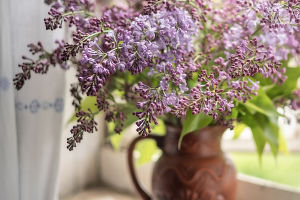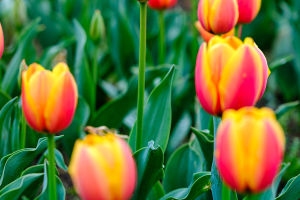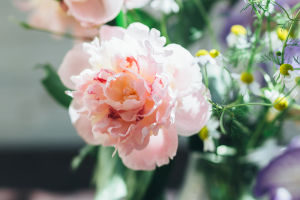
A Blooming Treasure

Peonies are one of the most beloved and cherished flowers in the world, known for their exquisite beauty and rich cultural symbolism.
These perennial plants belong to the genus Paeonia and are native to Asia, Europe, and North America.
1. History and Origin
The history of peonies dates back thousands of years, with their cultivation and appreciation deeply rooted in Chinese, Japanese, and European cultures. The name "peony" is derived from the Greek word "Paeon," who was a student of Asclepius, the Greek god of medicine.
According to mythology, Paeon used the peony plant to heal a wound inflicted by Hercules, which is why the plant is associated with healing and medicine.
Peonies have been cultivated in China for over 2,000 years, and they hold a special place in Chinese culture. They are often referred to as the "king of flowers" and are considered a symbol of wealth, honor, and prosperity.
Related
 Viola tricolor, with their vibrant flowers and ease of care, trace their origins to Africa and have become global indoor favorites.
Viola tricolor, with their vibrant flowers and ease of care, trace their origins to Africa and have become global indoor favorites.
 Lilacs are prized by both gardening enthusiasts and flower connoisseurs.
Lilacs are prized by both gardening enthusiasts and flower connoisseurs.
 Choose sustainable flowers and containers to help shape a better future together.
Choose sustainable flowers and containers to help shape a better future together.
 Tulips: Emblem of Beauty, Love, and Renewal Across Cultures.
Tulips: Emblem of Beauty, Love, and Renewal Across Cultures.
 Herbal Peony is mesmerizing in its elegance and beauty.
Herbal Peony is mesmerizing in its elegance and beauty.
 A fragrant addition to your home.
A fragrant addition to your home.
2. Classification
Herbaceous Peonies: These are the most common type of peonies and are known for their lush, herbaceous growth. They die back to the ground in winter and regrow in the spring.
Herbaceous peonies are further classified into several groups based on flower form, including single, semi-double, double, and anemone-type flowers. They are known for their fragrant and large blooms, which can be found in various colors, including white, pink, red, and coral.
Tree Peonies: Tree peonies are woody shrubs that retain some of their woody growth year-round. They have larger and often more intricate flowers than herbaceous peonies. Tree peonies are also available in a wide range of colors and are known for their elegant, tree-like structure.
3. Morphology
Stems and Leaves: Peony plants have thick, sturdy stems that can range from 1 to 3 feet in height for herbaceous peonies and up to 6 feet for tree peonies. The leaves are typically deep green and are composed of leaflets that radiate from a central stem. The leaflets are usually serrated along the edges.

Flowers: The hallmark of peonies is their stunning flowers. Each flower has a large, bowl-shaped bloom with numerous petals. The number of petals can vary, with some peonies having a single layer of petals (single form) and others having multiple layers (double form).
The flowers come in a wide spectrum of colors, from pure white and soft pastels to vibrant pinks, reds, and even deep purples. The fragrance of peony flowers can be subtle to strong, depending on the variety.
Roots: Peonies have fleshy, tuberous roots that store energy for growth and flowering. These roots can extend deep into the ground and become quite large and knotty with age.
4. Growing Conditions
Sunlight: Peonies thrive in full sun, which typically means at least six hours of direct sunlight per day. While they can tolerate some shade, they will produce more blooms in sunny locations.
Soil: Well-draining soil that is rich in organic matter is crucial for peonies. They prefer slightly acidic to neutral soil with a pH level between 6.0 and 7.0.
Water: Peonies require regular watering, especially during dry spells. However, they don't like to sit in waterlogged soil, so proper drainage is essential.
Spacing: When planting peonies, space them at least 3 to 4 feet apart to allow for good air circulation and prevent overcrowding.
Mulching: Applying a layer of mulch around the base of the plants can help conserve soil moisture and keep the roots cool. However, avoid piling mulch against the stems, as this can lead to rot.
In conclusion, peonies are not merely beautiful flowers but also carry a rich history, cultural significance, and medicinal value. Their enchanting blooms and lush foliage make them a cherished addition to gardens around the world.
Whether enjoyed for their ornamental beauty or utilized for their healing properties, peonies continue to captivate and inspire people across cultures and generations. Their enduring appeal serves as a testament to the enduring allure of nature's most splendid creations.